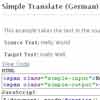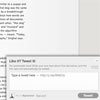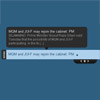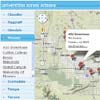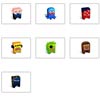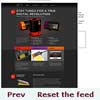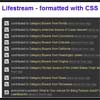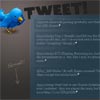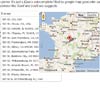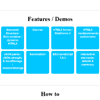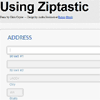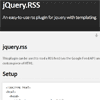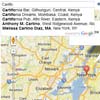instafeed.js
Instafeed is a dead-simple way to add Instagram photos to your website. No jQuery required, just good 'ol plain javascript.
⚠️ IMPORTANT! Instagram is changing the API that Instafeed.js depends on.
Before you decide to use instafeed.js, be aware that Instagram is shutting down the API platform that enables instafeed to work. As of now, instafeed.js works for some common uses (eg. embedding a single user's feed on a web page), but can't work for more complex uses (eg. retrieving all public images with a particular hashtag, finding posts based on a location, etc).
The platform API will be turned off completely in 2020, which means that instafeed.js in its current form will stop working then.
For more information on the current limitations of the API, please see the following:
Using instafeed.js
Examples:
Buy me a coffee:
If you enjoy using Instafeed.js and want to say thanks, you can leave me a small tip. All payments are securely handled through Stripe.
Installation
Setting up Instafeed is pretty straight-forward. Just download the script and include it in your HTML:
<script type="text/javascript" src="path/to/instafeed.min.js"></script>Instafeed.js also supports AMD/CommonJS
// AMD require(["path/to/instafeed"], function(Instafeed) { }); // CommonJS var Instafeed = require("instafeed");NPM/Bower
Instafeed.js is also available on NPM and Bower:
npm install instafeed.js # npm bower install instafeed.js # bowerBasic Usage
Here's how easy it is to get all images tagged with #awesome:
<script type="text/javascript"> var feed = new Instafeed({ get: 'tagged', tagName: 'awesome', clientId: 'YOUR_CLIENT_ID' }); feed.run(); </script>Instafeed with automatically look for a <div id="instafeed"></div> and fill it with linked thumbnails. Of course, you can easily change this behavior using standard options. Also check out the advanced options for some advanced ways of customizing Instafeed.js.
Requirements
The only thing you'll need to get going is a valid client id from Instagram's API. You can easily register for one on Instagram's website.
If you need help with that step, just try Googling "How to get an Instagram client ID".
Standard Options
clientId- Required. Your API client id from Instagram.accessToken- A valid oAuth token. Can be used in place ofclientId.target- Either the ID name or the DOM element itself where you want to add the images to.template- Custom HTML template to use for images. See templating.get- Customize what Instafeed fetches. Available options are:popular(default) - Images from the popular pagetagged- Images with a specific tag. UsetagNameto specify the tag.location- Images from a location. UselocationIdto specify the locationuser- Images from a user. UseuserIdto specify the user.
tagName(string) - Name of the tag to get. Use withget: 'tagged'.locationId(number) - Unique id of a location to get. Use withget: 'location'.userId(number) - Unique id of a user to get. Use withget: 'user'.sortBy(string) - Sort the images in a set order. Available options are:none(default) - As they come from Instagram.most-recent- Newest to oldest.least-recent- Oldest to newest.most-liked- Highest # of likes to lowest.least-liked- Lowest # likes to highest.most-commented- Highest # of comments to lowest.least-commented- Lowest # of comments to highest.random- Random order.
links- Wrap the images with a link to the photo on Instagram.limit- Maximum number of Images to add. Max of 60.useHttp- By default, image urls are protocol-relative. Set totrueto use the standardhttp://.resolution- Size of the images to get. Available options are:thumbnail(default) - 150x150low_resolution- 306x306standard_resolution- 612x612
Advanced Options
before(function) - A callback function called before fetching images from Instagram.after(function) - A callback function called when images have been added to the page.success(function) - A callback function called when Instagram returns valid data. (argument -> json object)error(function) - A callback function called when there is an error fetching images. (argument -> string message)mock(bool) - Set to true fetch data without inserting images into DOM. Use with success callback.filter(function) - A function used to exclude images from your results. The function will be given the image data as an argument, and expects the function to return a boolean. See the example below for more information.
Example Filter (get username + tagged):
var feed = new Instafeed({ get: 'user', userId: 'USER_ID', filter: function(image) { return image.tags.indexOf('TAG_NAME') >= 0; } }); feed.run();To see a full list of properties that image has, see issue #21.
Templating
The easiest way to control the way Instafeed.js looks on your website is to use the template option. You can write your own HTML markup and it will be used for every image that Instafeed.js fetches.
Here's a quick example:
<script type="text/javascript"> var feed = new Instafeed({ get: 'popular', tagName: 'awesome', clientId: 'YOUR_CLIENT_ID', template: '<a class="animation" href="{{link}}"><img src="{{image}}" /></a>' }); feed.run(); </script>Notice the {{link}} and {{image}}? The templating option provides several tags for you to use to control where variables are inserted into your HTML markup. Available keywords are:
{{type}}- the image's type. Can beimageorvideo.{{width}}- contains the image's width, in pixels.{{height}}- contains the image's height, in pixels.{{orientation}}- contains the image's orientation. Can besquare,portrait, orlandscape.{{link}}- URL to view the image on Instagram's website.{{image}}- URL of the image source. The size is inherited from theresolutionoption.{{id}}- Unique ID of the image. Useful if you want to use iPhone hooks to open the images directly in the Instagram app.{{caption}}- Image's caption text. Defaults to empty string if there isn't one.{{likes}}- Number of likes the image has.{{comments}}- Number of comments the image has.{{location}}- Name of the location associated with the image. Defaults to empty string if there isn't one.{{model}}- Full JSON object of the image. If you want to get a property of the image that isn't listed above you access it using dot-notation. (ex:{{model.filter}}would get the filter used.)
Portrait and Landscape Photos
Until June 1, 2016, Instagram's API will return square images (with white borders), regardless of how they were originally uploaded.
If you'd like to get images in their original landscape and portrait forms, you can opt-in to the API change by editing your Instagram API client, and clicking on the "Migrations" tab:
Note: If you have the
resolutionoption set tothumbnail(default), all images will be square regardless of your API settings.
Image Size Template Helpers
As of v1.4.0, Instafeed.js includes several helpers you can use in your template option to work with the new image sizes. These helpers are meant primarily to help control styling of the images through CSS.
{{width}}- contains the image's width, in pixels{{height}}- contains the image's height, in pixels{{orientation}}- contains the image's orientation. Can besquare,portrait, orlandscape.
Getting images from your user account
To fetch images specifically from your account, set the get and userId options:
var userFeed = new Instafeed({ get: 'user', userId: YOUR_USER_ID, accessToken: 'YOUR_ACCESS_TOKEN' }); userFeed.run();Note:
YOUR_USER_IDoption corresponds to your Instagram account ID (eg: 4385108), not your username. If you do not know your account ID, do a quick google search for "What is my Instagram account ID?". There a several free tools available online that will look it up for you.
Troubleshooting: If you are seeing the error
No user specified. Use the 'userId' optionin your browser console, make sure there are no quotation marks around the value foruserId. Instafeed.js is expecting theuserIdas a number, not as a string.
Pagination
As of v1.3, Instafeed.js has a .next() method you can call to load more images from Instagram. Under the hood, this uses the pagination data from the API. Additionally, there is a helper .hasNext() method that you can use to check if pagination data is available.
Together these options can be used to create a "Load More" button:
// grab out load more button var loadButton = document.getElementById('load-more'); var feed = new Instafeed({ // every time we load more, run this function after: function() { // disable button if no more results to load if (!this.hasNext()) { loadButton.setAttribute('disabled', 'disabled'); } }, }); // bind the load more button loadButton.addEventListener('click', function() { feed.next(); }); // run our feed! feed.run();Contributing to Development
This isn't a large project by any means, but I'm definitely welcome to any pull requests and contributions. Everything is written and tested in CoffeeScript.
You can get your copy up and running for development quickly by cloning the repo and running npm:
$ npm install This will install all the necessary test tools for testing. There is also a Makefile in the repo to make your tests quick and easy:
make testwill run all the tests using Mocha + Chai + CoffeeLintmake minwill create the minified versionmakewill run both the previous steps and compile everything
Change Log
1.4.1
- Fixes an issue where some data used in templates would get incorrectly escaped.
1.4.0
accessTokenis no longer required to fetch images from user accounts!- New template helpers for working with the new portrait and landscape images.
targetcan now accept a DOM node directly, instead of just a string ID, thanks @juhamust!- Squashed the last (hopefully!) of the IE8 bugs.
- Fixed image loading errors when using Instafeed.js on a local file protocol (
file://). Thanks @spoonben! - Added support from AMD and CommonJS.
- Improved error messaging when Instafeed.js can't find it's target element on the page.
- Instafeed.js no longer complains when trying to use strings for the
userId,locationId, andlimitoptions.
1.3.2
- Fixed the
useHttpoption when no template is set. Thanks @bartekn!
1.3.1
- Fixed an issue where
sortBy: "most-recent"did not always correctly sort the images. Thanks Neil Campbell! - Changed the default
sortByoption to benone.
1.3.0
- Image URLs are now protocol-relative by default. Use the new
useHttpoption to disable. - Added the ability to filter out images using the
filteroption. - Added pagination support using
.next()and.hasNext()methods. - Removed the default
limitof 15 images. The option is still supported, but by default no limit is sent to the API.
1.2.1
- Fixed IE8 error "Object doesn't support this action".
1.2.0
- Added the ability to sort images! Use the sortBy option.
- Added {{likes}}, {{comments}}, {{id}}, {{caption}}, {{location}}, and {{model}}, tags to the template option.
1.1.0
- Added option to use a custom html template with the template option.
- Added ability to fetch several feeds at the same time (create separate instances).
- Added before, success, after, and error callback options.
- Added mock option to only fetch data. Use with success option for custom DOM manipulation.
1.0.0
- Initial release





